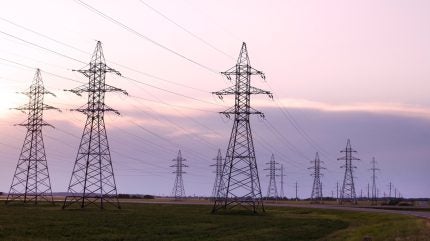
The blackout in Spain and Portugal that took place on 28 April 2025 has highlighted the urgent need for a comprehensive upgrade of Europe’s power grid.
With the grid’s infrastructure dating back to the twentieth century and with half of the lines more than 40 years old, the European Union (EU) is facing a critical situation.

Discover B2B Marketing That Performs
Combine business intelligence and editorial excellence to reach engaged professionals across 36 leading media platforms.
Investments of trillions of dollars are required to accommodate the surge in green energy production and increasing electricity demands, and to ensure the prevention of future blackouts, according to a report by Reuters.
Kristina Ruby, Secretary General at Eurelectric, emphasised the urgency of the situation, stating: “The blackout was a wake-up call. It showed that the need to modernise and re-inforce Europe’s electricity grid is urgent and unavoidable.”
The EU’s grid is not only antiquated but also vulnerable to cyber threats, which necessitates digital protection measures as part of the overhaul.
Despite a near doubling in global investment in renewables since 2010, grid investment has stagnated at approximately $300bn annually.

US Tariffs are shifting - will you react or anticipate?
Don’t let policy changes catch you off guard. Stay proactive with real-time data and expert analysis.
By GlobalDataThe International Energy Agency suggests that this figure needs to double by 2030 to exceed $600bn each year to cover the necessary upgrades.
Spain’s recent power outage, which its authorities and the EU are now investigating, underscores the grid’s fragility in the face of increasing renewable energy integration and the need for more robust infrastructure.
Renewable energy’s share in the EU’s power mix climbed to 47% in 2024 from 34% in 2019, while fossil fuels dropped to 29% from 39%, according to Ember.
Spain, which plans to phase out coal and nuclear power, saw renewable generation reach a record high of 56% of its power mix in 2024. However, the speed of building wind and solar projects contrasts sharply with the lengthy and complex process of grid improvement.
The European Commission estimates that Europe needs to invest between $2tn and $2.3tn in grids by 2050.
2024 saw European firms invest €80bn ($90.5bn) in grids, a significant increase from previous years, but analysts at Bruegel suggest that this may need to rise to €100bn annually.
Spain and Portugal are particularly vulnerable due to their lack of connections to other grids that could provide backup during emergencies.
The European Commission has set a target to increase interconnection to 15% by 2030, aiming for each EU member country to import at least 15% of its power production capacity from neighbours.
The challenges extend beyond grid upgrades to the need for backup generation, as solar and wind farms produce direct current power, which must be converted to alternating current for use. In the event of a drop in power generation, backup alternating current power is critical to maintain grid frequency and prevent blackouts.
Spain’s plans to shut down all seven of its nuclear reactors by 2035 and Portugal’s reliance on only two backup plants highlight the potential risks to the power supply.





